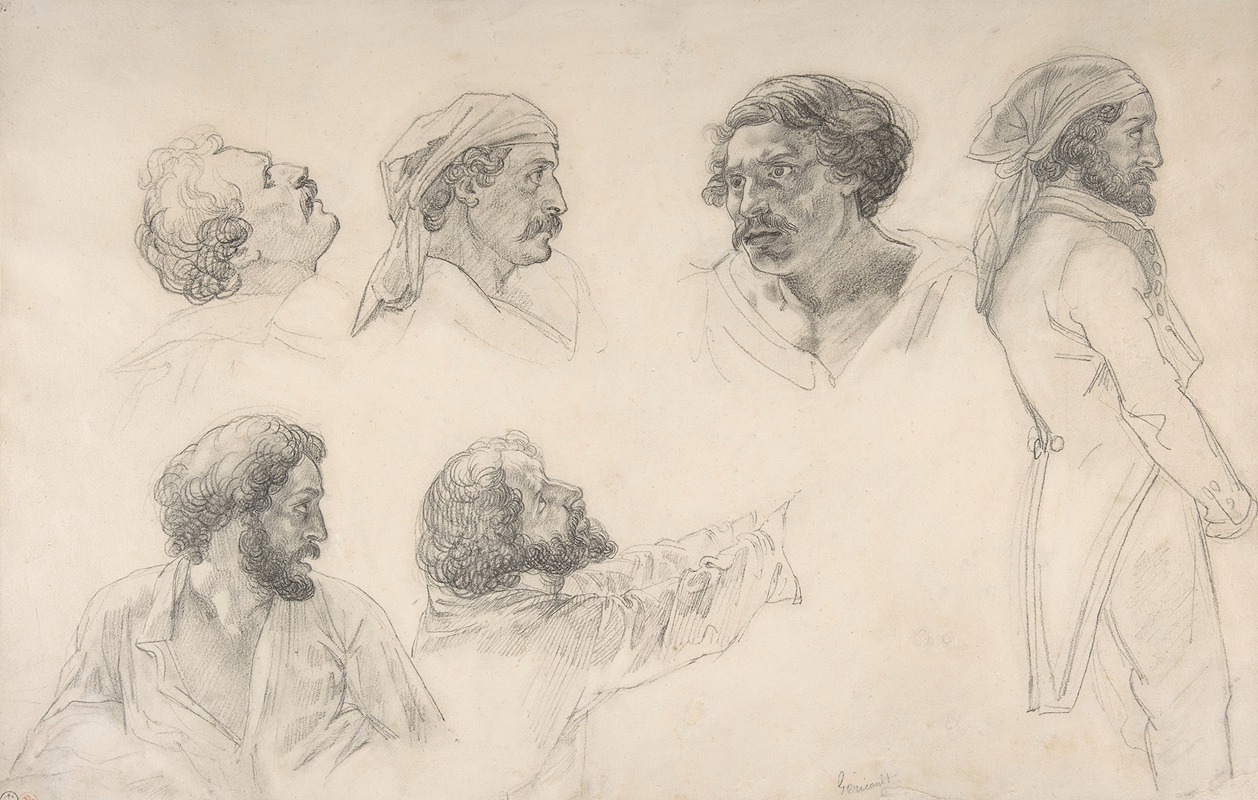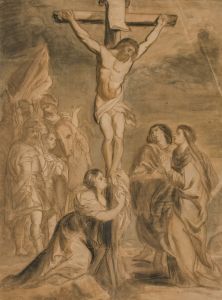
Six studies for Corréard and Savigny in the ‘Raft of the Medusa’
A hand-painted replica of Théodore Géricault’s masterpiece Six studies for Corréard and Savigny in the ‘Raft of the Medusa’, meticulously crafted by professional artists to capture the true essence of the original. Each piece is created with museum-quality canvas and rare mineral pigments, carefully painted by experienced artists with delicate brushstrokes and rich, layered colors to perfectly recreate the texture of the original artwork. Unlike machine-printed reproductions, this hand-painted version brings the painting to life, infused with the artist’s emotions and skill in every stroke. Whether for personal collection or home decoration, it instantly elevates the artistic atmosphere of any space.
Six Studies for Corréard and Savigny in the ‘Raft of the Medusa’ by Théodore Géricault
The Six Studies for Corréard and Savigny in the ‘Raft of the Medusa’ are preparatory works created by the French Romantic painter Théodore Géricault (1791–1824). These studies were part of Géricault's extensive research and preparation for his monumental painting The Raft of the Medusa (Le Radeau de la Méduse), completed in 1819. The painting depicts the aftermath of the wreck of the French naval frigate Méduse in 1816, a tragedy that became a national scandal in France due to its association with governmental incompetence and corruption.
The studies specifically focus on two key figures from the historical event: Alexandre Corréard and Henri Savigny. Corréard was an engineer and geographer, while Savigny was a surgeon; both were survivors of the Méduse shipwreck and played significant roles in documenting the ordeal. Their firsthand accounts, published in 1817, provided Géricault with critical details about the harrowing experience of the survivors, who endured starvation, dehydration, and cannibalism while adrift on a makeshift raft for 13 days.
Géricault's studies for Corréard and Savigny are believed to have been part of his effort to accurately portray the suffering and emotional intensity of the survivors. Known for his meticulous approach to realism, Géricault conducted in-depth research for The Raft of the Medusa, including interviews with survivors, visits to morgues, and anatomical studies. The six studies likely served as preparatory sketches or paintings to refine the depiction of these two individuals in the final composition.
The exact medium and dimensions of the six studies are not consistently documented, but they are presumed to be either oil sketches or drawings. These works demonstrate Géricault's focus on human expression, anatomy, and the psychological depth of his subjects. While the studies themselves are not as widely recognized as the final painting, they are considered important examples of Géricault's preparatory process and his commitment to historical accuracy.
The final painting, The Raft of the Medusa, is now housed in the Louvre Museum in Paris and is regarded as one of the masterpieces of French Romanticism. It captures a moment of desperate hope as the survivors on the raft signal to a distant ship. The inclusion of figures like Corréard and Savigny in the painting underscores Géricault's intent to humanize the tragedy and critique the political and social issues of his time.
Further details about the current location or condition of the six studies are not widely available, and their role in Géricault's broader body of work remains a subject of interest for art historians.


















